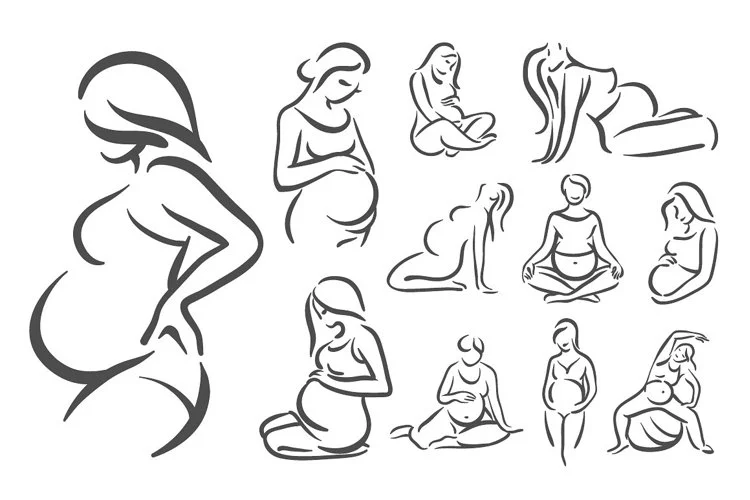As we stood in front of the mirror, excitement filled the air. The audience, numbering over 20, was there to witness a special event, even though only five little dancers were in the spotlight. Someone had even brought in what appeared to be a professional photographer. But I wasn’t going to judge; today marked a significant milestone as our 3-year-old ballerinas took the stage for their very first recital.
The word “recital” shimmered with promise.
I had never been a dancer myself, nor had I grown up surrounded by the world of tutus and ballet shoes, but I could feel the palpable energy of the moment. My darling daughter, donning a fluffy pink tutu that matched her bubbly personality, was soaking it all in.
So, yes, I embraced my role as a proud dance mom. Yet, I carried a secret that set us apart from the other families in the room. Doctors had warned me that my little ballerina might never walk or talk.
I had no knowledge of the other children’s journeys, nor they of mine, but I couldn’t help but think that none of the other moms had undergone extensive evaluations to ensure their child could participate. They hadn’t seen multiple specialists just to determine the right shoes for their child or spent hours on the phone advocating for an exemption from traditional ballet slippers. I doubted any of them had to carry their child out of class when the energy was depleted. But in that moment, my focus was solely on my daughter.
As I glanced around, I overheard conversations about future ballet classes and the challenges of balancing dance with piano lessons. I smiled politely, knowing that each mom had their own path. I brushed off whispered comments about my 3-year-old’s need for diapers. “Is she still a baby?” they’d ask. I calmly responded, “No, she wears them to help her right now.” I even noticed the hisses meant to discourage their kids from staring at my daughter’s braces, but I reassured them. “It’s okay! They help her walk. Would you like to see the cute hearts on them?” My girl remained blissfully unaware, and I was learning to build resilience as a mother of a child with a disability.
Finally, all five mothers stood opposite the four little ballerinas, who were perfectly positioned, while my daughter waved at her reflection across the room. The teacher shot me an encouraging glance as she guided my child to her spot. Then, the music began. My daughter’s smile was infectious as she leaped into her dance! Tears streamed down my face, and my husband held my hand tightly. We were transported back to the moment we received her diagnosis—a rare syndrome that promised a long and challenging journey. But here she was, dancing with all her heart, bopping to her unique rhythm, while the other girls remained stationary in their positions.
“Ugh. That child is so distracting! My Laura can’t focus.”
A surge of anger ignited within me. I turned slowly to meet the gaze of the mother who dared to utter those words. My protective instincts kicked in, and I was ready to confront her. My friend, sensing my transformation, squeezed my hand. “Not now,” she whispered, trying to calm my rising fury. My husband, oblivious to the comment, looked at me with confusion, questioning my sudden shift. I took a deep breath, focusing instead on the joy radiating from my little ballerina.
She beamed with happiness on stage, cheering for the other dancers during their solos and following the teacher’s cues as best she could. When it was time to bow, she did so as if it were a grand opening night, basking in the applause. She glowed with pride as we headed home.
That night, as I tucked her into bed, I pondered my feelings. I understood this mother wanted her daughter to have a wonderful experience, and perhaps my child had interrupted that. Yet, I remembered that it was merely a beginner class for toddlers, and no one had batted an eye at the little redhead who was distracted by her own antics during the performance. I could let it slide; after all, it was just one woman. But the disdain in her tone—especially the “ugh”—was intolerable.
I resolved to speak up. My daughter deserved compassion and empathy, and it was my duty to advocate for her.
If my life were a movie, “The Confrontation” would be a pivotal scene. I had time to collect my thoughts and breathe deeply, preparing to express myself without tears. I remained calm, never raising my voice or placing guilt on her. I simply asked if we could speak privately and shared my story, explaining how her comment made me feel. It was a mix of painful and empowering, and I would do it again in a heartbeat. I no longer harbor anger towards that woman; instead, I feel grateful. The interaction pushed me further along my journey as an advocate for my daughter, and it felt liberating.
I don’t need to unleash my fierceness to support my child—though it’s reassuring to know I have that strength within me. I prefer to navigate life with kindness and understanding. I encourage other mothers to do the same. After all, we are all just trying to protect our children.
For more insights on navigating motherhood and the challenges we face, check out this helpful resource and consider exploring this informative guide on home insemination. You can also read more about related topics in this post.
Summary:
This heartfelt narrative reflects a mother’s experience at her daughter’s first ballet recital, highlighting the challenges she faces as the parent of a child with special needs. As she navigates judgment from other parents, she learns to advocate for her daughter while embracing the joy of the moment.
